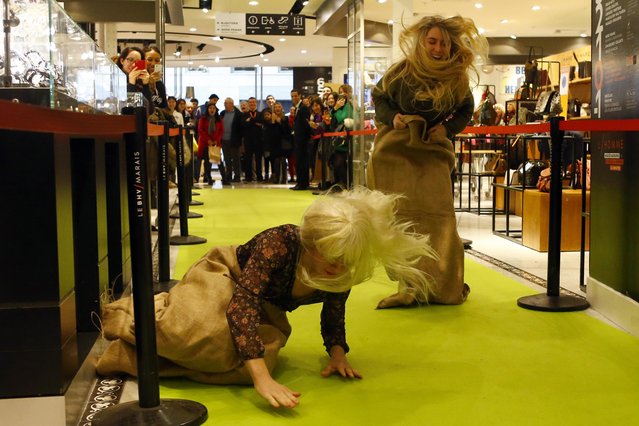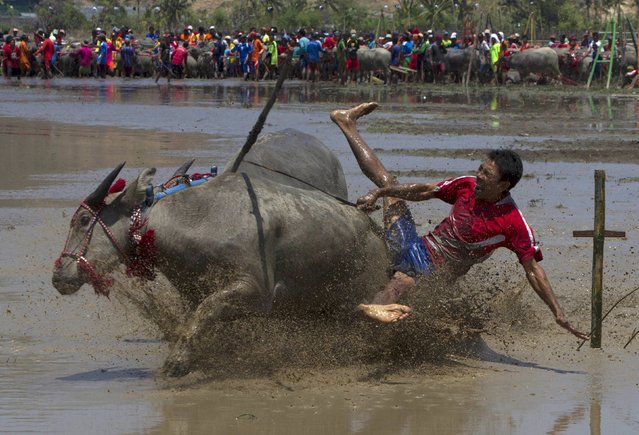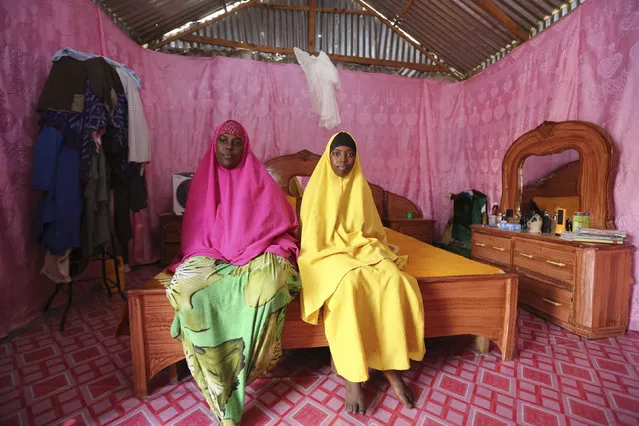
Participants, one of them loosing balance, jump in a sack race at a shopping center in Paris to win a 500 euros voucher (537 USD), on the first day of the winter sales in Paris, France, Wednesday, January 6 , 2016. The five-week 2016 winter sales start everywhere across France on Wednesday Jan. 6 and end on Feb. 16. (Photo by Francois Mori/AP Photo)
07 Jan 2016 10:16:00,post received
0 comments







